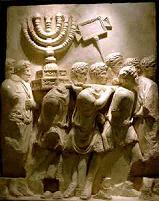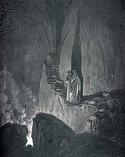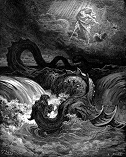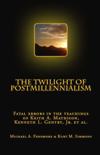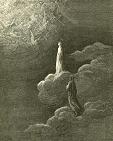Vaccine-passports and the Mark of the Beast
Resisting the Temptation to Interpret Ancient Prophecies by Contemporary Events
Kurt Simmons, JD
There is not now, nor has there ever been,
a public health emergency involving COVID-19. The whole pandemic
exists solely in the lying statistics of government data and the
manipulation of PCR tests. The numbers of both “cases” and
“deaths” have been grossly exaggerated and manipulated so that
there can be no certainly about the actual lethalness of the
disease.[1]
However, even according to official data the overall survival
rate for COVID-19 is about 98.51.[2] The average
age of those that succumb to the disease is about 82 years old.[3]
The overwhelming majority of the population therefore has no
more to fear of this disease than the seasonal flu.
Why then the maniacal push by the
government to inoculate the entire population with potentially
dangerous experimental mRNA gene therapy “vaccines”? Public
health and welfare are clearly not the motivation.
Many see the push as the means to impose
“vaccine-passports,” which will be used as a stepping stone to a
digital wallet and currency by which the government can monitor
and control every aspect of human activity. Such a system is
already in place in Communist China replete with a system of
“social credit scoring” by which the state punishes citizens who
dare to question its policies. Similar
repressive measures are being foisted upon the free people of
western countries. Already in France and New York City access to
certain essential goods and services is tied to proof of
vaccination. Across the country, men and women are being forced
out of employment for refusal to accept the jab.
The book of Revelation speaks of a time
when “no man might buy or sell, save he have the mark of the
beast” (Rev. 13:17). Many believe that vaccine-passports portend
fulfillment of the prophet’s words. If these events are
prophesied, then the outcome is inevitable and many will be
tempted to sit back and “let come what may.” The end of the
world is come and there is nothing more to be done. But if they
are not prophesied, the outcome is not inevitable; with heaven’s
assistance evil can be resisted and good prevail.
In this article we look at the book of
Revelation and the “mark of the beast.” We will conclude that,
although vaccine-passports adopt coercive techniques similar to
those depicted in Revelation, the imagery of Revelation was
fulfilled in the generation it was written.
Date and Theme of Composition
· The single martyrdom of Antipas
in Asia (Rev. 2:13). Since multitudes perished worldwide under
Nero, the single martyrdom of Antipas argues that the
persecution under Nero had not yet transpired. By the time of
Domitian, this would no longer be true.
·
Two persecutions are depicted by
John. The first, which broke out shortly after the ascension of
the “Man-child” (Christ), would have been the persecution that
arose over Stephen. The second was the great eschatological
battle Revelation was written to address. Since the persecution
under Nero was the second and greatest, undoubtedly it is to
this John refers. If Domitian’s persecution were in view, a
third would have to be represented.
·
Activities of the Judaizers.
Repeat reference to the “synagogue of Satan” and those who say
they are Jews but are not (Rev. 2:9; 3:9) shows that the
Judaizers were still actively troubling the churches, attempting
to corrupt the gospel as they had all during the ministry of
Paul. This would have changed following the destruction of
Jerusalem in AD 70.
·
The city and temple are portrayed
as still standing (Rev. 11:1). These were destroyed in AD 70 and
therefore argue for the early date of composition.
·
The tribes are still extant. John
portrays a time of political stability during which the war with
Rome was held back until a remnant was sealed from the Jews by
obedience to the gospel (Rev. 7:1-8).
·
The sixth emperor, Nero, was
still on the throne when John wrote (Rev. 17:10).[4]
Perhaps the most direct evidence that
Revelation describes events long ago fulfilled is the fact that
the world civil powers which persecute God’s people through the
“mark of the beast” are the same civil authorities in
power at the time of Christ’s birth. The “great red dragon” with
seven heads and ten horns which attempts to destroy Christ at
his birth (Rev. 12:1-5) is the same civil authority that
persecutes the church, first, in the persecution that arose over
Stephen (Rev. 12:6-17; cf. Acts 6:9-9:31), and, second,
in the persecution under the emperor Nero (Rev. 13-20).
The “seven heads” and “ten horns” describe
political attributes of this world civil power. John states that
the seven heads are “seven kings: five are fallen; one is;
and the other is not yet come; and when he cometh, he must
continue a short space” (Rev. 17:10). These are:
1)
Julius Caesar
2)
Augustus Caesar (in whose 42nd
year Christ was born)
3)
Tiberius Caesar
4)
Gaius (“Caligula”) Caesar
5)
Claudius Caesar
6)
Nero Caesar
7)
Galba
Therefore, according to John, Nero was in
power when he wrote the Apocalypse. Galba, the seventh emperor
of Rome, raised a rebellion against Nero in AD 68, initiating
the “year of four emperors” – the Roman civil wars that left
Rome, Italy, and the empire in ruins. Galba reigned only six
months, “a short space.”
The “ten heads” are best understood as the
ten senatorial provinces created by Augustus in 27 BC.[5]
The number of Roman provinces was not static, but varied.
Imperial provinces were ruled by the emperor and were armed with
legions; senatorial provinces were under the government of the
senate and were unarmed, possessing no legions.[6]
The identity of the
senatorial provinces changed from time to time, but there were
always ten and only ten. These ten provinces therefore became an
identifying feature of the empire from and after 27 BC. This is
confirmed by the fact that the same identifying feature of the
empire is reflected in the imagery of the book of Daniel in the
ten toes of the great image (Dan. 2:33, 41) and in ten horns of
the fourth beast or world empire (Dan. 7:7, 20). The identity of
the dragon in Revelation and the fourth beast/world empire in
Daniel is admitted by virtually all commentators.[7]
John states that the book was about things
that “must shortly come to pass” and that were “at hand” (Rev.
1:1, 3; 22:6, 7, 10,12, 20). Virtually all New Testament
discussion of the eschaton or end-time crisis was couched in
similar terms, expressly stating it would occur within the lives
of the first disciples (Matt. 10:23; 16:27, 28; 23:34-39; 24:34;
26:64; John 21:19-23; Rom. 13:11, 12; I Cor. 1:7; 7:29; Heb.
10:37; James 5:8, 9; et alia). Difficult passages must be
interpreted in light of those that are simple and plain. As
between direct time-statements placing the eschaton in the lives
of the first disciples and the highly charged apocalyptic
imagery of Revelation, the former must control our
interpretation, not the latter. Modern readers would do well to
recall that Revelation was written to the people of John’s time;
not our own. Since the same civil authority in power at the
nativity of Christ was also in power during the persecution
portrayed by John in Revelation, the book cannot possibly refer
to modern events.
Identity of Remaining Characters
·
The Woman (Rev. 12). This
woman is sometimes confused with the virgin, Mary, because she
is portrayed as giving birth to Christ, but she is better
understood collectively in terms of the faithful, covenant
people of God (cf. Isa. 66:7, 8).
·
The Harlot (Rev.17, 18).
The Harlot is defined as the “great city…where also our Lord was
crucified” (Rev. 11:8). This makes plain that the Harlot is
Jerusalem. She is portrayed as the driving force behind the
persecution, drunk upon the blood of Jesus’ martyrs (Rev. 17:6).
In her is found the blood of the all the righteous shed on earth
(Rev. 18:24), words expressly applied by Jesus against Jerusalem
(Matt. 23:35). The Harlot “sits upon many waters” or “peoples,
and multitudes, and nations, and tongues” (Rev. 17:1, 15). This
indicates that her political influence reached beyond Palestine
into the whole of the Roman Empire, probably in part through
illicit trade compacts negotiated with foreign states in
exchange for cooperation in the trial and persecution of
Christians (see Rev. 17:1; 18:3). John states that the great
city “reigns over the kings of the earth” (Rev. 17:18). This is
often mistaken in reference to Rome.[8]
However, as Jesus was not crucified in Rome and John expressly
identifies the “great city” as the city where Jesus suffered, it
is better understood in terms of Jerusalem’s political
domination and control of Jewish ethnarchs that ruled the Jewish
inhabitants of the empire’s separate nations and cities.
·
The Beast (Rev. 13:1-10).
This beast rises out of the sea, indicating it is a Gentile
power (compare Dan. 7:1 where the four successive Gentile world
empires rise from the Mediterranean Sea). The beast is the
alter-ego of the dragon; the dragon acts and makes war against
the church through the beast in the same way governments
prosecute war through their militaries (Rev. 13:2). Like the
dragon, the beast has seven heads and ten horns. One head was
wounded with a mortal blow, but the mortal wound subsequently
healed. The heads have a dual symbolism. We have already noted
that they represent the seven Caesars under which God’s people
suffered until victory was given to the saints. John also states
that the heads represent “seven mountains on which the woman
[harlot] sitteth” (Rev. 17:9). In ancient times it was customary
to build city-states upon hills and mountain out-crops due to
their natural defensive position (Isa. 2:12-14). The seven
mountains therefore are best understood as seven cities or
regions, perhaps with large Jewish populations, where the
persecution attained a head. If this is correct, the wounded
head likely refers to Palestine and the persecution that arose
over Stephen. This persecution collapsed by the conversion of
St. Paul and the removal Caiphas and Pilate from their
respective offices in AD 36 by Vitellius, the governor of Syria.[9]
The church then enjoyed a period of relative peace and security
under Claudius until the rise of Nero when the “mortal wound”
healed and persecution revived, symbolized by the ascent of the
beast from the Hadean abyss.[10]
·
The False Prophet (Rev.
13:11-18) also associated with the “kings of the earth” (Rev.
19:19, 20). This “beast” rises out of the “earth” or “land.” The
earth and land have connotations of Israel and the covenant
people and is set over against the sea and abyss, which point to
the Gentile peoples of the Mediterranean world. This beast looks
like a lamb but speaks like a dragon, indicating that it appears
outwardly to serve God, but in fact opposes God and his people
and is allied with the dragon. It is best understood as the
persecuting power wielded by the Jews in cooperation with Rome,
probably through Jewish ethnarchs and synagogues scattered
throughout the empire over which Jerusalem exercised power and
imposed anti-Christian orthodoxy.
The Mark of the Beast
“And he causeth all, both small and great,
rich and poor, free and bond, to receive a mark in their right
hand, or in their foreheads; and that no man might buy or sell,
save he that had the mark, or the name of the beast, or the
number of his name. Here is wisdom. Let him that hath
understanding count the number of the beast: for it is the
number of a man; and his number is Six hundred threescore and
six.” Rev. 13:16-18
We have already seen that the seven heads
of the beast represent seven Caesars and that Nero, the sixth
Caesar, was reigning while the Apocalypse was written. It
therefore should not surprise us that the cryptic number of the
beast is Nero’s name when transliterated from Latin into Hebrew.
Once Hebraicized, the Latin Nero Caesar becomes “NRWN
QSR,” the numeric equivalent of 666:
Num = 50
Qoph = 100
Resh = 200
Samech = 60
Waw
= 6
Resh = 200
Nun
= 50
It is difficult to know how literal to take
John’s language. We know from Pliny’s letter to Trajan (circa
AD 112) that men were required to offer sacrifice to Caesar’s
image to escape a charge of being a Christian. However, since
Jews would not themselves have made an image of Caesar, and
since the “false prophet” is almost certainly the Jewish
persecuting power,[11]
it seems unlikely that the passage is intended to be understood
literally.
Except for client kings like Herod, the
Jews and local governments did not have the power to put
individuals to death; the jus gladii (power of the sword)
was held solely by the Roman government as a check upon subject
nations and peoples (John 18:31). Since local governors would
not have presumed to contradict the example and authority of
Nero, it seems likely that the Jews exploited the persecution in
Rome to launch an inquisition against Christians in Judea and
accuse Christians to the civil authority in other parts of the
empire. Moreover, since the beast was merely a political policy,
to “make an image” of the beast presumedly would have entailed
adopting similar policies, rather than making a physical image
of Nero himself. To give “life” unto the image and to cause it
to “speak” and put to death all who do not worship it (Rev.
13:15) is best understood figuratively as giving political life
and shape to the persecution and causing it to issue decrees
under penalty of death. This is far preferable to giving actual
life to a statue of the emperor which is obviously impossible.
It was a well-documented practice among the
Jews to completely isolate those whom they had cast out and
anathematized. John’s Gospel provides several examples of this
very thing (John 10:22, 35; 12:42; 16:2; cf. Matt. 9:11;
Lk. 15:2). Of particular interest is John’s statement that the
Jews had “no dealings” with the Samaritans who were an
anathematized people (John 4:9). “No dealings” would obviously
include commercial transactions. John’s language that no man
might “buy or sell” is therefore best understood in terms of the
Jewish practice of ostracizing religious apostates and
non-conformists. Receiving the mark on the right hand or
forehead is very like the phylacteries worn by Jews which
consisted of small strips of parchment inscribed with texts of
the law, encased in leather and bound between the eyes or on the
forearm, and may be the source of John’s imagery. The “mark of
the beast” probably consisted of any test put forward by the
inquisition to mark those who maintained religious orthodoxy by
either expressly or implicitly rejecting Christ. The beginning
of this very thing may be seen in John’s Gospel and the book of
Hebrews where Jewish believers were under pressure to forsake
Christ and to return to the temple ritual and its sacrifices.
Historical Precedents and Antecedents
The Roman Empire in the time of Christ
embraced most of the inhabited world. Roman policy found it
necessary for the governance of its vast empire to secure to the
various peoples the right to maintain their ancestral laws and
customs, including their religious laws and observances.[12]
Attempt by Gaius Caligula to introduce images of the emperor
into Jewish synagogues in Alexandria and the temple in Jerusalem
had disturbed the Pax Romana and threatened rebellion by
the Jews.[13]
Claudius therefore wisely reaffirmed the Roman policy
guaranteeing the religious autonomy of its subject peoples.[14]
This policy, known as the religio licita (legally
protected religions), was extended by Claudius to Christianity,
which the Romans viewed as a sect of Judaism. Roman courts
therefore would not entertain complaints against Christians and
Claudius himself found it necessary to banish Jews from Rome and
Italy for their constant riots and tumults against the followers
of Christ (Acts 18:2, 12-16).[15]
It is almost certainly to Claudius and the
religio licita that Paul refers when he mentions “what
witholdeth” and “he who now restrains” the murderous hatred of
the Jews against Christ (II Thess. 2:6, 7). The “gathering
together” to Christ (v. 1) (e.g., “harvest by martyrdom,”
cf. Rev. 14:9-14) would follow removal of Claudius who
was “taken out of the way” (v. 7) by Agrippina, Nero’s mother,
who poisoned Claudius, opening the way for Nero to ascend the
throne.[16]
Nero would then be revealed as the ”man of sin and son of
perdition” who opposed and exalted himself against all that is
called God or worshipped (v. 3, 4), but who was slain by the
breath of Christ’s mouth at his coming (v.8) – poetic imagery
and language that describes the end Nero came to and the civil
wars that enveloped the empire and witnessed the destruction of
the Jewish nation. It is also likely to Claudius that John
refers when he mentions the binding angel that restrained the
dragon and beast until loosed for the final conflict in the
persecution under Nero (Rev. 20:1-11).[17]
But if Roman law guaranteed its subject
peoples the right to maintain their ancestral customs, what
calumnies and falsehoods might justify revoking this policy and
permit the overt persecution of Christians?
Titus Livy reports that in 186 BC Rome was
consumed in suppressing the Bacchanalian cult.[18]
This cult held secret ceremonies at night consisting of drinking
and feasting followed by sexual orgies, including group rape of
male initiates by priests. Moreover, the cult did not confine
itself to the pollutions of gross sexual immorality, but was
also a ready supply of false witnesses, forged documents and
wills, perjured evidence, and also dealt in poisons and
wholesale murder among the devotees.[19]
Because it was considered so dangerous to the state, the senate
empowered the consuls to conduct a special inquiry into the
bacchic ceremonies and nocturnal rites and to seek out and
suppress the cult by the imprisonment and death of its members.
To prevent their flight, the senate passed an edict “prohibiting
any attempt to sell or buy anything for the purpose of escaping,
and forbidding anyone to harbor or conceal any fugitives, or to
assist them in any way.”[20]
Although it served the narrow purpose of catching members of the
cult rather than coercing Christians to renounce Christ, the
language prohibiting any to “sell or buy” bears such close
resemblance to Rev. 13:17 we cannot help wonder if the allusion
is not deliberate.
Tertullian (AD 145-220) reports that
Christians were accused of Bacchanalianism consisting of the
ritual killing and eating of children, followed by incest and
orgies.[21]
Justyn Martyr complains of similar baseless accusations[22]
and lays blame at the feet of the Jews whom he says sent men
into all the world to spread these calumnies.[23]
These allegations appear to have had their source in the Feast
of Epiphany which commemorated Christ’s first miracle of turning
water into wine (John 2:1-11). The traditional date for this
miracle was January 6th, about sixty days following
Jesus’ fall baptism and his return to John at Bethabara (John
1:26-51). By accident of history,
the myth of Dionysus, whom the Romans called
Bacchus, had it that that god turned water into wine January 5th,
which was celebrated by festival the following day.[24] Moreover,
the city of Alexandria worshipped the god “Aeon,” which seems to
be a compound of Dionysus, Kronos, Apollo, and Osiris, and was
purportedly born to the virgin “Kore” the night of January 5th.[25] The shared
dates of January 6th, turning water into wine,
together with the virgin birth appear to have given hostile
parties colorable basis
for the charge that
Christianity was a form of Bacchanalianism whose members engaged
in sordid sexual crimes and homicide in their assemblies and
therefore should be proscribed. Indeed, these points of contact,
flimsy though they be, have caused some to charge that
Christians borrowed or appropriated the date of January 6th
from paganism and that John consciously fashioned his Gospel to
appropriate the myth of Dionysus to Jesus.[26]
Suppression of the Bacchanalian cult in 186 BC probably supplied
the legal precedent for Nero to single out the church for
attack. All that was required was sufficient pretext to move
against it. This came in the fire of AD 64.
In AD 64 fire broke out which consumed most
of Rome. Tacitus reports that to avert suspicion and popular
belief that Nero himself had ordered the city be fired, the
emperor accused Christians of the crime instead:
But neither human help, nor imperial
munificence, or all the modes of placating Heaven, could stifle
scandal or dispel the belief that the fire had been taken place
by order. Therefore, to scotch the rumour, Nero substituted as
culprits, and punished with the utmost refinements of cruelty, a
class of men, loathed for their vices, whom the crowed styled
Christians. Christus, the founder of the name, had undergone the
death penalty in the reign of Tiberius, by sentence of the
procurator Pontius Pilatus, and the pernicious superstition; was
checked for a moment, only to break out once more, not merely in
Judaea, the home of the disease, butt in the capital itself,
where all things horrible or shameful in the world collect and
find a vogue. First, then, the confessed members of the sect
were arrested; next, on their disclosures, vast numbers were
convicted, not so much on the count of arson as for hatred of
the human race. And derision accompanied their end: they were
covered with wild beasts skins and torn to death by dogs; or
they were fastened on crosses, and, when daylight failed were
burned to serve as lamps by night. Nero had offered his Gardens
for the spectacle, and gave an exhibition in his Circus, mixing
with the crowd in the habit of a charioteer, or mounted on his
car. Hence, in spite of a guilt which had earned the most
exemplary punishment, there arose a sentiment of pity, due to
the impression that they were being sacrificed not for the
welfare of the state but to the ferocity of a single man.[27]
The lies used to persecute Christians then
should be compared with the lies relied upon by the deep-state
and Biden administration to brand their political opponents as
domestic terrorists today. The imposition of vaccine-passports
bears further testimony that the present administration is the
spiritual descendant of Nero and those who murdered Christ.
Doubtless, Biden and his minions will come to similar ends.
Sic semper tyranus.
Conclusion
May God grant deliverance to all who wait
upon him and redeem us from our present crisis!
[1] In March
2020, CDC changed without hearing or public comment the
manner of reporting deaths for COVID-19, and only
COVID-19, from the manner used for the previous 17
years; this resulted in a 16.7-fold increase in the
number of deaths from 9,684 to 161,392 for the relevant
period.
https://www.ratical.org/PandemicParallaxView/C19dataCollection-C+FL-HistPerspec.pdf;
accessed September 14, 2021. See also
https://www.nytimes.com/2020/08/29/health/coronavirus-testing.html;
accessed September 14, 2021.
[2] For ages 0-19
the survival rate is 99.997%; ages 20-49 = 99.98%; ages
50-69 = 99.5%; 70 above 94.6%.
https://www.cdc.gov/coronavirus/2019-ncov/hcp/planning-scenarios.html?fbclid=IwAR3DvH5umpJxiObUDTKBckeBAfqudrtvzWfQhYiUfHeEhCFeg5UXzalabGg;
accessed September 14, 2021.
[3]https://www.ons.gov.uk/aboutus/transparencyandgovernance/freedomofinformationfoi/averageageofthosewhohaddiedwithcovid19;
accessed September 14, 2021. Of 66,257 deaths attributed
to COVID-19 in California as of September 9, 2021,
25,325 were age 80+, or 38.2%. Ages 60-80+ account for
81.6 percent of the all deaths.
https://www.cdph.ca.gov/Programs/CID/DCDC/Pages/COVID-19/COVID-19-Cases-by-Age-Group.aspx;
accessed September 14, 2021.
[4] The
definitive works arguing the early date are Redating
the New Testament, H.T. Robinson, Wipf & Stock
(1976, Eugene), and Before Jerusalem Fell,
Kenneth Gentry, American Vision (1998, Atlanta, GA).
[5] “In 27 B.C.
the provinces had been divided into two classes,
Imperial and Senatorial., ‘provinciae Caesaris,’
and ‘provinciae Sentatus’ or ‘populi.’ The
latter were ten in number, Africa, Asia, Bithynia,
Achaea, Illyricum, Macedonia, Crete and Cyrene, Sicily,
Sardinia, and Hispania Baetica…the Imperial provinces in
27 B.C. were Gaul, Syria, Cyprus and Cilicia, and
Hispania Citerior. The number was increased subsequently
by the division of single provinces into two or more,
and by the inclusion of all provinces constituted after
27 B.C., e.g., Moesia, Pannonia, and Dalmatia.” Thomas
Marris Taylor, A Constitutional and Political History of
Rome (Metheun & Co., London, 1889), 464; cf. Dio
Cassius, 53.12; Loeb ed.
[6] “His [i.e.,
Augustus’] professed motive in this was that the senate
might fearlessly enjoy the finest portion of the empire,
while he himself had the hardships and the dangers; but
his real purpose was that by this arrangement the
senators will be unarmed and unprepared for battle,
while he alone had arms and maintained soldiers.” Dio
Cassius, 53.2-12; Loeb ed.
[7] To avoid this
difficulty, some argue that there will be a “renewed”
Roman Empire, a third temple, etc. See, John F.
Walvoord, Revelation, revised ed, Moody
Publishers (2011, Chicago).
[8] See Augustine,
City of God, 13.22 where Rome is called the “second
Babylon.”
[9] Josephus,
Antiquities, 18.4.2-3.
[10] A brief
persecution arose under Agrippa in the days of Gius
Caesar, but appears to have only targeted the church’s
leaders. It ended abruptly when Agrippa died by the
stroke of God (Acts 12).
[11] We note that
whereas the beast has universal jurisdiction over “all
kindreds, and tongues, and nations (Rev. 13:7) which is
consistent with the Roman power, the false prophet has
authority only over those that “dwell upon the earth” or
land (Rev. 13:8, 12, 14). Its jurisdiction is therefore
limited to Jews, including those inhabiting foreign
countries as we see in the case of Paul who was given
letters to arrest and bring Jewish believers to
Jerusalem for trial (Acts 9:2). The peoples, kindreds,
tongues and nations are consistently set over-against
the earth or land throughout Revelation (11:9, 10; 13:7,
8; 14:3, 6; 16:14, cf. v. 19 – The “great city”
Jerusalem is set over against the cities of the
nations).
[12] Augustus
took exceeding care “that the national laws and customs
prevailing in each nation should be confirmed and
preserved.” Philo Judaeus, Embassy to Gaius,
23:153; cf. Josephus, Antiquities, 14.10
for decrees of Julius Caesar and the Roman Senate
guaranteeing the religious autonomy of the Jews.
[13] Philo
Judaeus, Flaccus; cf. Embassy to Gaius
16-20; cf. Josephus, Antiquities, 18.8.
[14] After the
death of Gaius, Claudius Caesar decreed that “all men
should be so subject [to the Romans] as to continue in
the observation of their own customs, and not be forced
to transgress the ancient rules of their own religion.”
Josephus, Antiquities, 19.5.2, Whiston ed.
[15] Suetonius,
Lives of the Caesars, “Claudius,” 25.4.
[16] Ibid,
“Claudius,” 44.
[17] “Angels” and
“stars” in Revelation are sometimes merely human agents
of divine providence; cf. Rev. 8:11; 9:1, 11.
[18] Livy,
History of Rome, 39.8-22.
[19]
“When once the
mysteries had assumed this promiscuous character, and
men were mingled with women with all the license of
nocturnal orgies, there was no crime, no deed of shame,
wanting. More uncleanness was wrought by men with men
than with women. Whoever would not submit to defilement,
or shrank from violating others, was sacrificed as a
victim. To regard nothing as impious or criminal was the
very sum of their religion” (Livy, History of Rome,
39.8-18).
[20]
Livy, 39:17.
[21]
“Monsters of wickedness, we are accused of observing a
holy rite in which we kill a little child and then eat
it; in which, after the feast, we practice incest, the
dogs – our pimps, forsooth, overturning the lights and
getting us the shamelessness of darkness for our impious
lusts.” Tertullian, Apology 1.6, 7.
[22]
Justin Martyr, First Apology, 27; Ante-Nicene
Fathers 1.172.
[23]
“At that time you selected and sent out from Jerusalem
chosen men through all the land to tell that the godless
heresy of the Christians had sprung up, and to publish
those things which all they who knew us not speak
against us…Accordingly, you displayed great zeal in
publishing throughout all the land bitter and dark and
unjust things against the only blameless and righteous
Light sent by God.” Justin Martyr, Dialogue with
Trypho, 1.17; cf. Acts 28:22.
[24]
“Also in the Isle of Andros there is a Fountain in the
Temple of Father Bacchus, which upon the Nones of
January always runneth with Water that tasteth like
Wine; as Mulianus verily believeth ; who was a Man that
had been thrice Consul.” Pliny, Natural Hist. 2.103. The
Kalends, Nones, and Ides of January were the 1st,
5th, and 13th of the month,
respectively (https://www.thoughtco.com/roman-calendar-terminology-111519;
accessed 6/8/2019).
[25]
Epiphanius, “Panarion,”
(“Against the sect which does not accept the Gospel
according to John, or his Revelation,”), in Nag
Hammadi and Manichaean Studies, eds. Einar
Thomassen, Johannes van Oort, 2nd revised
edition (Brill, 2013); trans. Frank Williams,
51.22.9-11, Vol. 79, p. 51, 52.
[26]
“The date, January 6, was chosen because in Egypt and
throughout the oriental world it had been from
time immemorial the feast of the ‘Epiphany of Dionysus,’ the god of
returning light and life” (Benjamin W. Bacon, “After Six
Days: A Clue for Gospel Critics” in Harvard
Theological Review, Vol. VIII, 2 (1915), 94-121);
cf. Bainton, “Basilidian Chronology and New
Testament Interpretation,” in Journal of Biblical
Literature (1923), XLII, 105.
To receive Kurt Simmons’ e-mail newsletter, The Sword & The Plow, click the Subscribe link:
All rights reserved.
